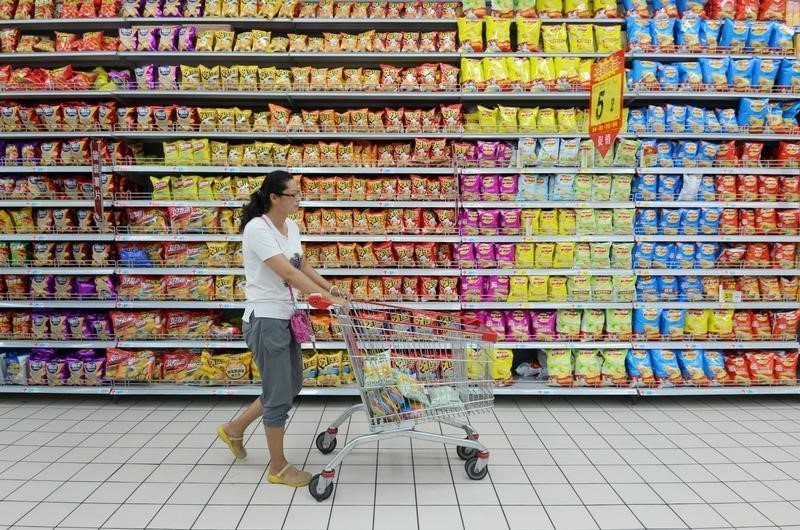Gold prices slip lower; consolidating after recent gains
(Bloomberg) -- China’s record trade surplus is cushioning the economy from weakening domestic demand and giving policy makers room to delay stimulus. But it won’t be enough to keep growth from slowing further.
Export growth has exceeded analyst estimates for three straight months, and the trade surplus reached $84.5 billion in October, data on Sunday showed. Problem is, gross domestic product is now so large that overseas demand can’t replace easing investment and consumer spending.
China’s economy has slowed sharply in recent months as efforts to rein in the property market ripple through industries from construction to commodities. A power crunch has forced factories to slow output, while stringent measures to curb virus outbreaks have damped consumption.
“The government can afford to wait till the year-end to loosen monetary and fiscal policies, now that exports provide a buffer to smooth the economic slowdown,” Zhang Zhiwei, chief economist at Pinpoint Asset Management Ltd., said in a note.
Premier Li Keqiang said last week the economy is facing “new downward pressures” and policies need to be fine-tuned to provide targeted support to areas that need it.
China’s role as the world’s largest exporter meant it benefited as demand for goods rose in the wake of the pandemic. The World Trade Organization raised its projection for global trade growth in 2021 to 10.8% from 8%, the biggest year-over-year jump since 2010. It estimates a 4.7% increase in 2022.
The persistence of China’s export strength has surprised economists who predicted that global spending on made-in-China goods would ease as more countries re-open this year. That proved premature as the more infectious delta variant spread throughout the world.
China’s factories won orders this year as large-scale coronavirus outbreaks in countries such as Vietnam, India and Malaysia caused factory closures. The country exported almost no vaccines pre-pandemic, but shipped vaccines worth $11.7 billion in the first nine months of the year.
Automobile exports more than doubled so far in 2021 as the country emerged as a production hub for electric vehicle manufacturers including Tesla (NASDAQ:TSLA) Inc.
Partly as a result of labor-intensive production of textiles and plastic toys relocating back to China, the nation increased its share of global trade to record levels of 14%-15% this year, according to the CBP World Trade Monitor, published on behalf of the European Commission.
“Supply chain problems have seemingly been a blessing for China,” said Craig Botham, chief China economist at Pantheon Macroeconomics.
Strong demand means China’s exporters have gained confidence to raise their prices by as much as 10%-20% year-on-year, multiple Chinese factory owners told Bloomberg News.
Economists polled by Bloomberg now expect China’s full-year export growth of over 24%. Still, trade has less of an impact now on China’s growth trajectory.
In the first three quarters of the year, China’s exports grew 23%. Net exports contributed just 20% of China’s GDP growth over the period, a fraction compared to government and household spending on goods and services, which accounted for 65% of the expansion.
What Bloombergs Economists Say...
China’s export growth will remain strong in the coming months, but will be “insufficient to counter domestic headwinds from power shortages and a cooling property sector.”
--Eric Zhu
The surplus on China’s current account - a broad measure of trade - rose to its highest level since 2016 this year, but remained at just 2% of GDP in the latest quarter, well below levels of around 10% seen before the 2008 financial crisis.
While major global central banks are under pressure to roll back stimulus, the People’s Bank of China has had to balance the risk of rising inflation while boosting its economy weighed by power shortages and Covid-related curbs. The country’s Covid-zero approach had led to a tightening of restrictions around travel and social gatherings to contain frequent flare-ups of virus cases.
Fiscal policy will provide the main support to economic growth next year while significant monetary easing is unlikely, according to Huang Yiping, a former central bank adviser. The PBOC has refrained from cutting banks’ reserve requirement ratio since a reduction in July, and has kept policy interest rates steady since early last year.
©2021 Bloomberg L.P.
